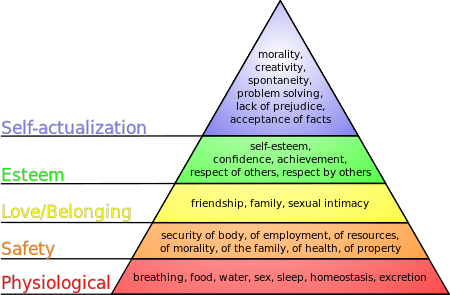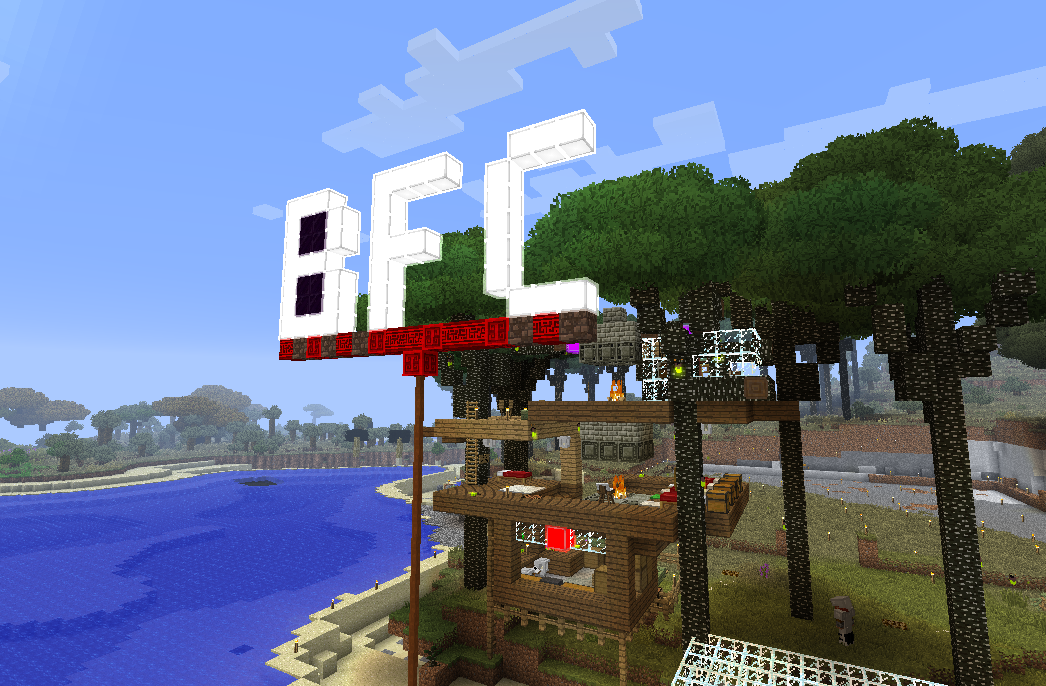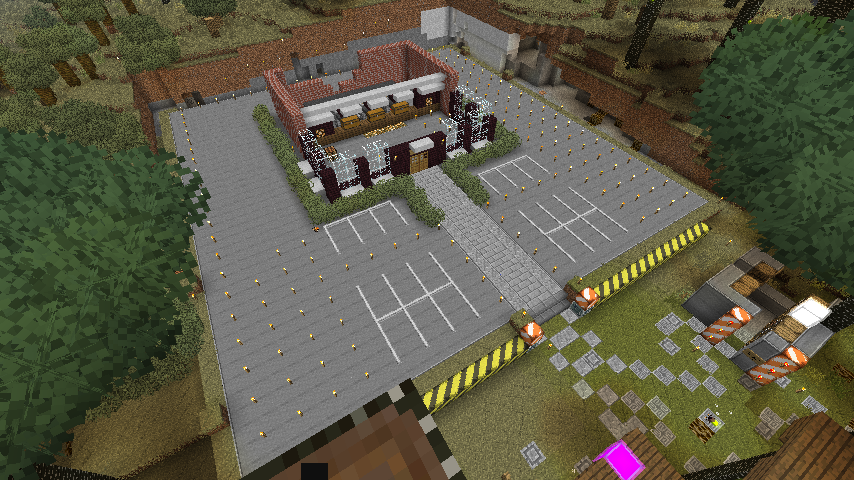Why #BigFriedChickenCompany
This past week, I spent a large amount of time in a car driving around the Atlantic provinces of Canada. Most of my time was spent either driving along the coast or through what was once farm country.
Much of my time during this road trip was spent reading, as I was unable to go online and play Minecraft. I alternated between reading Ian Bogost’s Alien Phenomenology and Anna Anthropy’s Rise of the Videogame Zinesters.
During my time reading and thinking, I was wondering about this blog post and what exactly I would write. I had read Bogost’s chapter on Carpentry before and knew what to expect, it had been a while since I last read this particular piece. Refreshing my memory allowed me to rediscover Carpentry and contrast it not only with Anthropy’s work, but also with my own adventuring in the Maritimes.
When we spend all of our time reading and writing words – or plotting to do so – we miss opportunities to visit the great outdoors. (Bogost 90)
So much of my time in Minecraft is spent travelling long distances in search of loot and materials to build and build and build. Here in the real world, driving from Montréal to the coast of Nova Scotia is a round trip of about 2,480 km. Crossing that kind of distance on the mLab server is not trivial, but completely unlike the real world when factoring resources like time and energy.
I started to think about a talk I’d recently heard by games scholar Rilla Khaled on reflective design in videogames (talk slides here). Rilla’s emphasis on the way clarity and reflection is sacrificed in videogames for the sake of “immersion” can lead to players losing time that could be spent reflecting and thinking. While books as an art form have plenty of room for escapism, videogames is a genre dominated by the pursuit of “immersive play” at the detriment of reflection. By obfuscating the passage of time in games with this marketing concept called “immersion”, games become “time sinks” in which players lose grasp on the time spent on a game.
I love playing Minecraft, but I’m not sure the manner in which I play Minecraft prioritizes reflection. The more I thought of prioritizing “clarity over obfuscation”, the more I wondered “Why build a #BigFriedChickenCompany in Minecraft anyways?”
Currently, our server, named “mLab Prime”, has a small community developed around the spawn point called “N00b’s Landing”, a headquarters called “Flower Hill Head Quarters”, and an industrial factory/power plant type building on a beach called “Site Lambda”. Just down the beach from Site Lambda, following a path of redstone in the sand, a player will see the letters “BFC” floating against the tree line. BFC stands for Big Fried Chicken, and is the company I am helping put together on Minecraft with a handful of other players. Building a fast food franchise in a game like Minecraft is a thought-provoking next step for mLab Prime. Minecraft is a resource gathering game – on a server in which players share resources and have grouped close together, starting a fast food franchise is an odd intrusion of “real world” capitalism into the otherwise idyllic “mLab Prime”. Our community in Minecraft spends a lot of time creating resources that everybody can share – N00b’s landing, Flower Hill HQ and Site Lambda are quite heavily stocked with resources and a train system connecting various islands. A newcomer to the game saves thousands of hours that would otherwise be spent collecting materials and exploring the area by foot. Time and energy saved, obfuscating the dangers of Minecraft (exploding mobs, dying of starvation) and taking care of the first steps of Maslow’s hierarchy of needs. A fast-food franchise, which could take care of the food needs of the entire community of mLab Prime, may feel like a capitalistic next step, but not completely alien to the already industrialized area in which we started building the #BFC construction site.

Maslow’s Hierarchy of Needs
Building an industrial-level chicken roasting complex in Minecraft is not trivial, but it is also completely unlike building one in real life. While we will have to worry about energy resources, hoarding chickens, and dealing with maintaining a steady input and output of chickens, the costs in terms of time and energy is quite different.
On my way back to Montréal from the Maritimes, I was reminded of this quite vividly. Around two in the morning just north of Victoriaville, Québec, we had to stop for gas. As we pulled into the parking lot, I heard a strange noise. It was coming from a huge truck parked a few metres from us.
The strange sound was the screaming of pigs crammed into a truck. The reality of industrial-level agriculture and farming crashed down on my bleary sleep-deprived mind. I approached the side of the truck carefully, not wanting to excite the caged animals even more than they already were. The pigs were covered in lines of paint (probably some sort of branding) and many were attacking each other. Quite a few were lying on the floor, limp, as other frightened pigs trampled on top of them.
The moment outside of a gas station in rural Québec was a pretty stark reminder why the economic principles that hold up the fast food industry in North America are vile. I was glimpsing a tiny part of it. I felt disgust well up in my chest when I got back into the car and saw my notes on #BigFriedChickenCompany. I flipped through Anna Anthropy’s book, looking for something she has said on videogames that has stuck with me for a long while now:
What are videogames about? Mostly, videogames are about men shooting men in the face. Sometimes they are about women shooting men in the face. Sometimes the men who are shot in the face are orcs, zombies, or monsters. […] if one looked solely at videogames, one would think the whole of human experience is shooting men and taking their dinner orders. Surely an artistic form that has as much weight in popular culture as the videogame does now has more to offer than such a narrow view of what it is to be human. (Anthropy 3)
In building #BigFriedChickenCompany, ignoring the ethical repercussions of real-world factory farming is not unlike building a videogame in which the only mechanic that matters is shooting moving targets. We cannot blindly create industrial structures and ignore the way in which we treat even pixelated creatures, because that further obfuscates our own real-world relationship with our food.
Fast food franchises muddy the relationship between demand and supply. Acquiring large amounts of fried chicken in ever greater amounts is consumerist, and the ease in which #BFC plans to feed the entire server risks sacrificing reflection on what we eat.
Once the first #BFC building is complete, I will be looking into building humane, and likely time-intensive farming and restaurant Minecraft franchises.
Follow #BigFriedChicken on tumblr.
Tweet Your Love for #BigFriedChicken!
Works Cited
Bogost, Ian. Alien Phenomenology Or What It’s Like To Be A Thing. 2012.
Anthropy, Anna. Rise of the Videogame Zinesters. 2012



[…] I’ve written a little bit before about individual realization during discussions on concepts such as Maslow’s hierarchy in Minecraft before. On top of self-realization, the game offers interesting insight into such […]